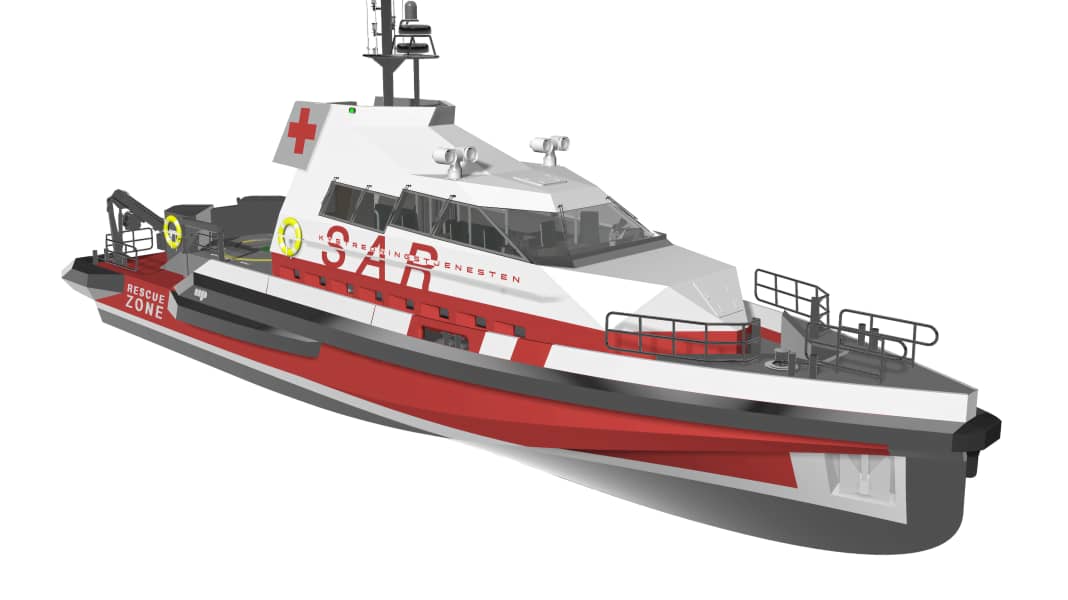
Unlike in, for example Germany or Sweden, sea rescue in Denmark is a state affair: Kystredningstjenesten (the Coastal Rescue Service) is part of the civil protection organisation, but is integrated into the command structure of the Danish Navy. For this reason, it is entitled to public funding - unlike the two neighbouring countries.
Boats for Denmark come from Norway
A few weeks ago, the parliament in Copenhagen approved around 340 million Danish kroner (around 46 million euros) for the procurement of an initial seven new emergency vehicles, which will be delivered to the sea rescuers between 2026 and 2028. They are intended for the Skagen, Østerby, Anholt, Grenå, Gedser, Rønne and Nexø rescue centres.
The new series is referred to internally as DRV (Danish Rescue Vessel), but in fact these are boats of the Sjøbjørn 71 type, which are suitable for various operational concepts and in this case are equipped for the SAR role ex shipyard. The manufacturer is Maritime partners in Norway. The order from Denmark is the largest ever for the company in Ålesund, Norway.
Great speed and range
Thanks to a propulsion system with two 1600 hp water jets, the 21.7 metre long aluminium boats can reach a speed of more than 35 knots - a decisive criterion in the event of an alarm, especially in larger sea areas such as the Kattegat and the waters around Bornholm, as is the range of 350 nautical miles. An enormous leap in performance. They are also technically and electronically equipped for a wide range of tasks. Special emphasis is also placed on the safety of the crew.
Kystredningstjenesten currently operates a total of 21 rescue centres throughout Denmark. The Joint Rescue Coordination Centre (JRCC) in Karup acts as the control centre. According to their own information, the units were recently involved in 300 rescue missions per year. In a further 300 cases, assistance was provided at sea.
